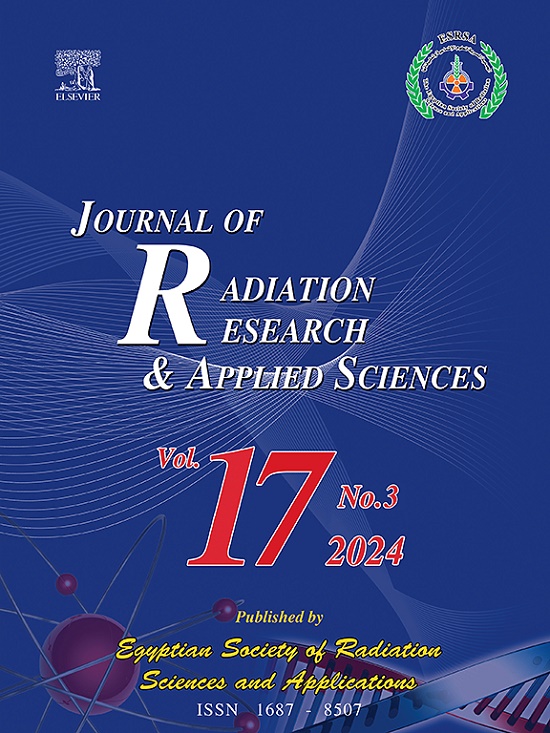Optimizing flow and heat transfer in industrial processes: The potential of trihybrid nanofluid and thermal-radiation using Hamilton-Crosser and Xue models
IF 1.7
4区 综合性期刊
Q2 MULTIDISCIPLINARY SCIENCES
Journal of Radiation Research and Applied Sciences
Pub Date : 2025-02-01
DOI:10.1016/j.jrras.2025.101322
引用次数: 0
Abstract
The present study uses the Hamilton-Crosser thermal conductivity and Xue models to study the impacts of thermal radiation on thermal boundary layer convective flow of propylene glycol-based trihybrid nanofluid across a spinning disk with thermal slip and velocity slip conditions. This recommended model evaluates the performance of two popular trihybrid nanofluid models, the Xue model and Hamilton-Crosser model. In chemical reactors, thermal power plants, and advanced cooling systems, this model allows for the accurate prediction and improvement of thermal conductivity and energy efficiency. Especially in high-temperature settings, companies can improve heat dissipation, lower energy consumption, and increase process stability by utilizing the outstanding thermal capabilities of trihybrid nanofluids. When effective heat management is essential, such as in microelectronics cooling, automotive thermal management, and renewable energy systems, this method is especially helpful. By comparing the Xue and Hamilton-Crosser models, it is possible to optimize the flow parameters and nanoparticle composition, which improves thermal systems' stability and energy efficiency. The transformation of significant similarity is used to build ordinary differential equations for the nonlinear dimensionless system. This problem can be resolved mathematically using the Bvp4c approach. The outcomes demonstrate that although the thermal profile improves as the Brinkman's number increases, the rate of heat transmission decreases.

求助全文
约1分钟内获得全文
求助全文
来源期刊

Journal of Radiation Research and Applied Sciences
MULTIDISCIPLINARY SCIENCES-
自引率
5.90%
发文量
130
审稿时长
16 weeks
期刊介绍:
Journal of Radiation Research and Applied Sciences provides a high quality medium for the publication of substantial, original and scientific and technological papers on the development and applications of nuclear, radiation and isotopes in biology, medicine, drugs, biochemistry, microbiology, agriculture, entomology, food technology, chemistry, physics, solid states, engineering, environmental and applied sciences.
 求助内容:
求助内容: 应助结果提醒方式:
应助结果提醒方式:


